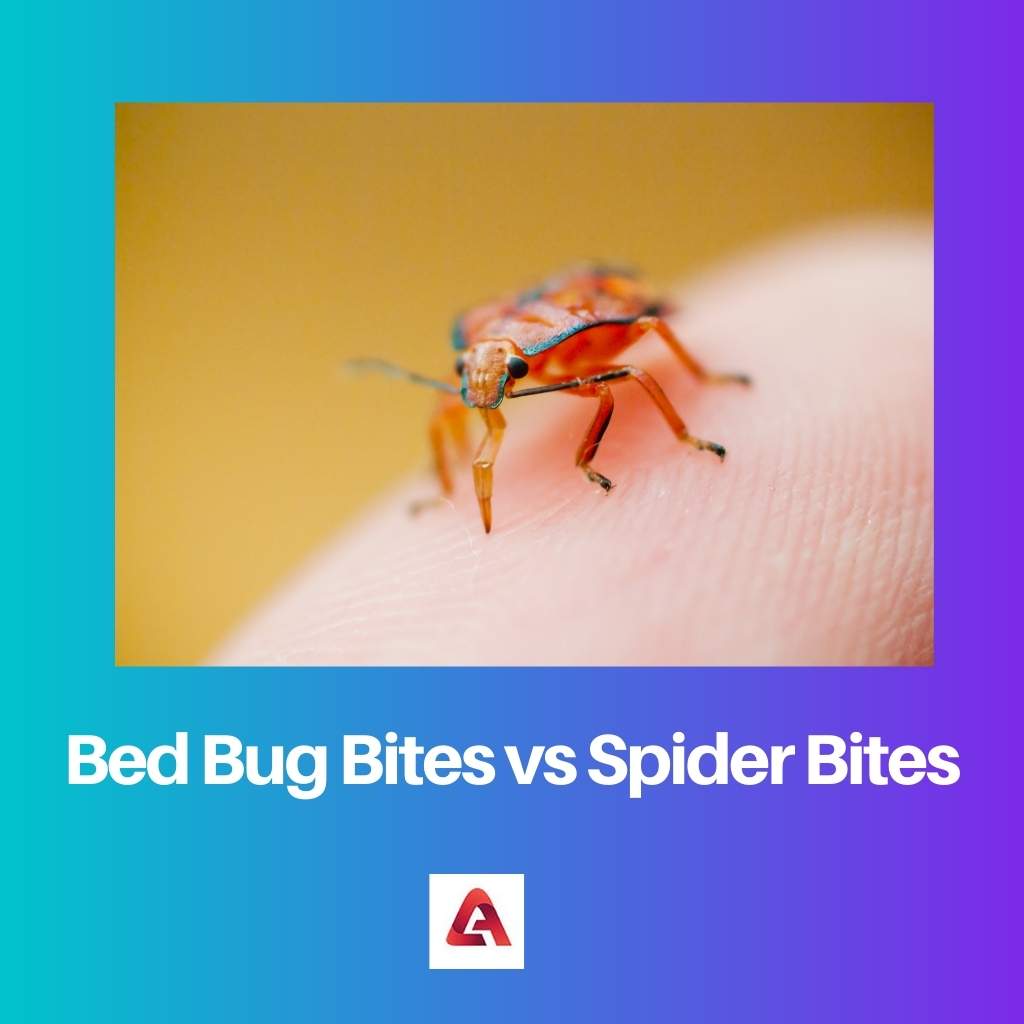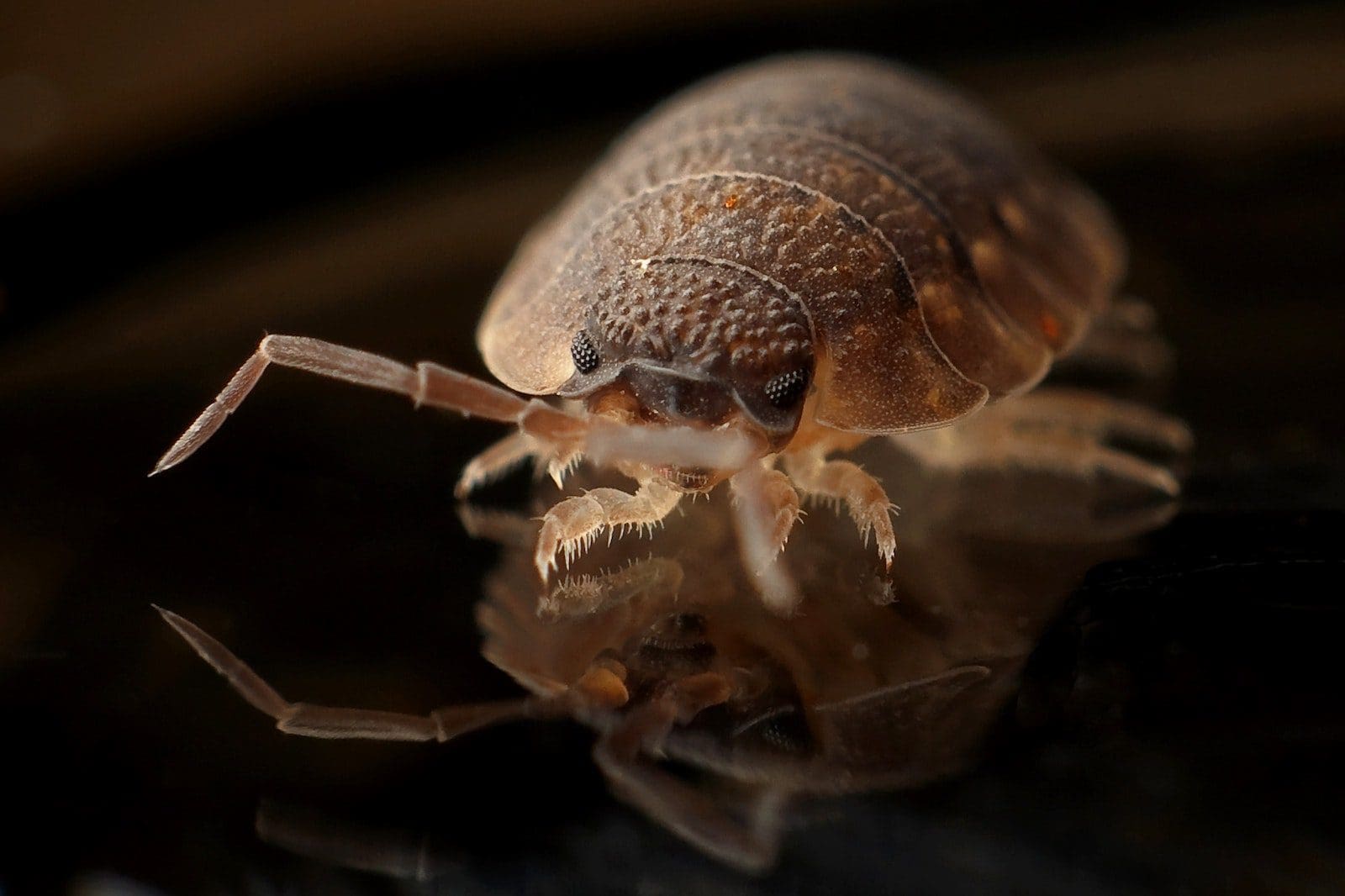You find strange bites on your legs when you first wake up. So you’re certain it wasn’t a bite from a flea or a mosquito. Is it possible that you’ve been bitten by a spider? It’s also possible that you’re infected with bed bugs.
It can be difficult to tell the difference between a spider bite and an insect bite. Both look the same and don’t itch as much as a flea or mosquito bite.
Key Takeaways
- Bed bug bites appear in clusters and are grouped, while spider bites occur as a single bite.
- Bed bug bites cause itching and a burning sensation, while spider bites can cause pain, swelling, and redness.
- Bed bug bites appear on areas of the body that are exposed during sleep, while spider bites can occur anywhere on the body.
Bed Bug Bites vs Spider Bites
Bed bug bites are small, red, and grouped together. They appear on areas of the body that are exposed during sleep and can cause intense itching. Spider bites may appear as two puncture wounds with redness and swelling. The symptoms can vary and may include pain, muscle cramps, etc.

Bedbugs are tiny parasitic insects that feed on the blood of both people and animals. They can reside in your mattress, furniture, carpet, and clothes, among other things.
They’re most active at night, preying on unsuspecting victims as they sleep.
Bedbug bites are rarely hazardous, although they can be irritating and painful if you get them. They can infect you or make you allergic to anything.
Spider bites are extremely rare, as are the majority of them. Spiked animals have poison in their venom, however, human skin can’t be punctured by the tiny fangs of the vast majority of spiders.
You may not even be aware that a spider has bitten you if this is the case. Instead of thinking a spider bites you, you might believe an insect did it.
Comparison Table
| Parameters of Comparison | Bed Bug Bites | Spider Bites |
|---|---|---|
| Bite mark | The straw that bed bugs drink from is so thin that it is difficult to detect a bite. | Spiders have two sets of teeth, thus they leave two little punctures where they bit. |
| Size of the bite | The bites of bed bugs are the size of a pimple. | Because spider bites are larger than bed bug bites, the bites can be quite Code Generated by https://saijogeorge.com/json-ld-schema-generator/faq/large—up to the size of a knuckle. |
| Variability of the bite | Bed bugs are only found in two primary kinds, and both species bite in the same way. | Because there are so many different types of spiders, some bites are significantly larger than others. |
| Number of bites | Bed bugs are social insects that feed in bunches. In a cluster, there are frequently a large number of bites. | They are solitary creatures that do not congregate or attack in packs. |
| Do the bites get infected? | Not very often, unless you keep scratching at them in an attempt to get them to open up more often. | Frequently, because they are larger wounds. |
What are Bed Bug Bites?
Bedbugs can be as small as 1 mm or as large as 7 mm in size. It is reddish-brown in hue and has an oval shape. Because they lack wings, they must be carried from one location to another by animals or people.
Bedbug bites do not always result in apparent symptoms. Bite lines or clusters are red and swollen with dark spots in the centre, and several bites are itchy when symptoms emerge. Bite lines are arranged in lines or clusters.
Bedbugs have no preference for where you sleep. However, they prefer to bite exposed skin parts such as your face, neck, arms, and hands while you sleep. Bites that turn into fluid-filled blisters can happen in some circumstances.
There is no immediate pain if a bedbug bites you since the insects secrete a small quantity of anaesthesia before feeding on humans. Bed bug bite symptoms can take up to a week to appear.
Bites from bedbugs turn red and swell up. Your body may have a line or cluster of bug bites at one time. Itchy bites are the norm. Some people report feeling like they’re on fire after using these products.
There is a possibility that bedbugs in your home are not feeding every night. Even without nourishment, they’ll survive for several days.

What are Spider Bites?
Spiders are arachnids and not insects. They belong to the same family as scorpions, ticks, and mites. The eight legs are characteristic of all these arachnids. Spiders play an important role in the food chain by eating pests that could harm crops.
There are at least 60 different types of spiders in the United States, but only a few are harmful to people. Black widows, Brown recluses, and hobo spiders are some of the deadlier species of spiders.
Children and the elderly are the most vulnerable to black widow and brown recluse bites because of their small size (who may be frail or in poor health).
A spider bite kills fewer than three individuals per year. The vast majority of these fatalities are caused by children.
The symptoms of a spider bite can vary based on the type of spider that bitten you. The agony from a black widow spider bite is like a pinprick. The biting site becomes numb as a result of this.
Brown recluse spider bites do not cause instant discomfort or obvious symptoms. Instead, an hour after the bite, you may still experience discomfort. In most cases, a hobo spider bite will not be painful.

Main Differences Between Bed Bug Bites and Spider Bites
- The bites of some spiders can induce severe gastrointestinal problems, such as cramping and vomiting. The itching from bed bug bites is all there is to it.
- The majority of the time, treating bed bug bites is not necessary. On the other side, spider bites may call for anti-venom injections.
- Bites from bed bugs appear in clusters and have a linear pattern on the arms, neck, torso, and back. Spider bites, on the other hand, are most commonly found on the hands, arms, and fingers.
- Spider bites leave a single swelling bump on your skin, whereas bed bug bites leave many smaller bumps.
- Spider bites take longer to heal than bed bug bites.

- https://jamanetwork.com/journals/jamadermatology/article-abstract/547915
- https://www.cabdirect.org/cabdirect/abstract/20103083473

This article is nothing but unsubstantial and confusing.
This article is indeed educational, but it is lacking an in-depth analysis of the cultural implications of bed bug and spider bites.
Am I the only one who thinks this article is just a waste of time?
This article didn’t provide the depth of comparison between bed bug bites and spider bites that is expected from a high-level publication.
I somewhat agree, Luke80. While the post does provide some information, it lacked scientific analysis and more thorough data.
The information in this article is really enlightening and well-documented. I’ve always had trouble telling the difference between spider and bed bug bites, but now it’s clear. Thanks!
Absolutely, Melissa! I couldn’t agree more. This post really helped clarify things for me as well.
This article is really insightful and has truly helped me distinguish between the symptoms of bed bug and spider bites. This is high-level content!
Absolutely, Robertson Laura. I couldn’t agree more. This post really cleared things up for me as well.
The article was very informative, I’m grateful for the clear and concise way in which the differences between bed bug bites and spider bites are explained. The comparison table was especially helpful.
I appreciate the focus on facts and the easy-to-follow language. The comparison table was indeed a valuable addition.
I expected a more witty and intriguing take on the topic, not just a mere comparison.